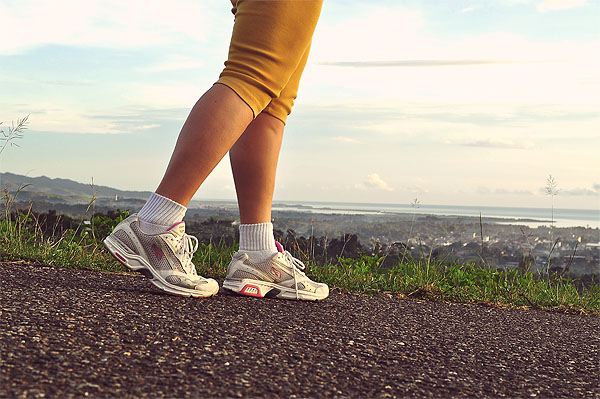Running related stress injuries are very common with both beginners and more advanced athletes. If you experience pain in the front or medial part of your lower leg – you might have an injury called medial tibial stress syndrome. More commonly known as shin splints, which is a frequent injury for athletes of all skill levels. Over 30% of all running injuries have been estimated to be shin splints.

Runners aren’t the only ones who get it, anyone working on hard surfaces is likely to get shin splints and the condition is often misdiagnosed as the pain might only be felt by touch at the early stages.
Shin pain is no laughing matter. In the beginning, it might be causing only a small discomfort, but as the injury becomes more chronic, it makes becomes difficult run or in worst cases even to walk. Shin splints is generally an impact related injury. That is why running on hard surfaces is a common cause for the problem.
While running, every step creates a certain amount of force or trauma to your shin bone and the connecting muscles and tissues. If certain precautions aren’t taken before building your running mileage, it very likely for anyone to develop shin splints. Sometimes the shin pain might be a sign of stress fracture; some sources attribute the actual cause of shin splints to small micro fractures on the shin bone (tibia). The downside of bone related injuries are that they can take several months to heal.

If you are feeling pain on your shins, you certainly don’t want to continue running and cause more damage to your lower legs. Resting often works best as a treatment, but it is important to get a doctors evaluation of what actually is the cause of your pain.
For the treatment and prevention of shin splints it is necessary to evaluate what caused the lower legs to have too much trauma. A common mistake for runners is to try to run too much too soon. But even many professional athletes also get shin splints. The cause might be repeating the same movements over and over on hard surfaces. Cross training and changing up the workouts might help as a preventing method along with remembering to slowly build up the mileage.
Many athletes also have muscle weaknesses in their lower legs, core or gluteal muscles. These muscles weaknesses might cause excess forces to your shin bone. Strengthening not only lower legs, but the entire body allows it work as one unit and decreases the forces inflicted to any one part of the body.
A common mistake athletes make is to use shoes that are too worn out or simply the wrong type. Everyone has a unique running gait and foot pronation. Having your running style evaluated buy a professional helps in choosing the correct type of running shoe. New shoes should be bought every three months. Several runners also have biomechanical dysfunctions caused by either muscle weaknesses or tightness’s in the calves. Running with a heavy heel strike might cause unnecessary force to your shins.
There are several ways for shin splints rehabilitation and prevention. Using ice and cold therapy in the first week of shin pain is a good way of reduce the inflammation and speed up the recovery. Sometimes custom orthotics or shin sleeves are good at either reducing the stress or correcting the alignment of the feet. Doing non-impact activities such as aqua jogging, rowing or weight training is great way to stay in shape while avoiding further trauma to your shins.
Suffering from shin splints doesn’t have to mean a loss fitness level. With the right kind exercising it is possible for an athlete recover from shin splints in an even better shape than prior to the injury.
http://www.youtube.com/watch?v=bLVIl4PnrCU